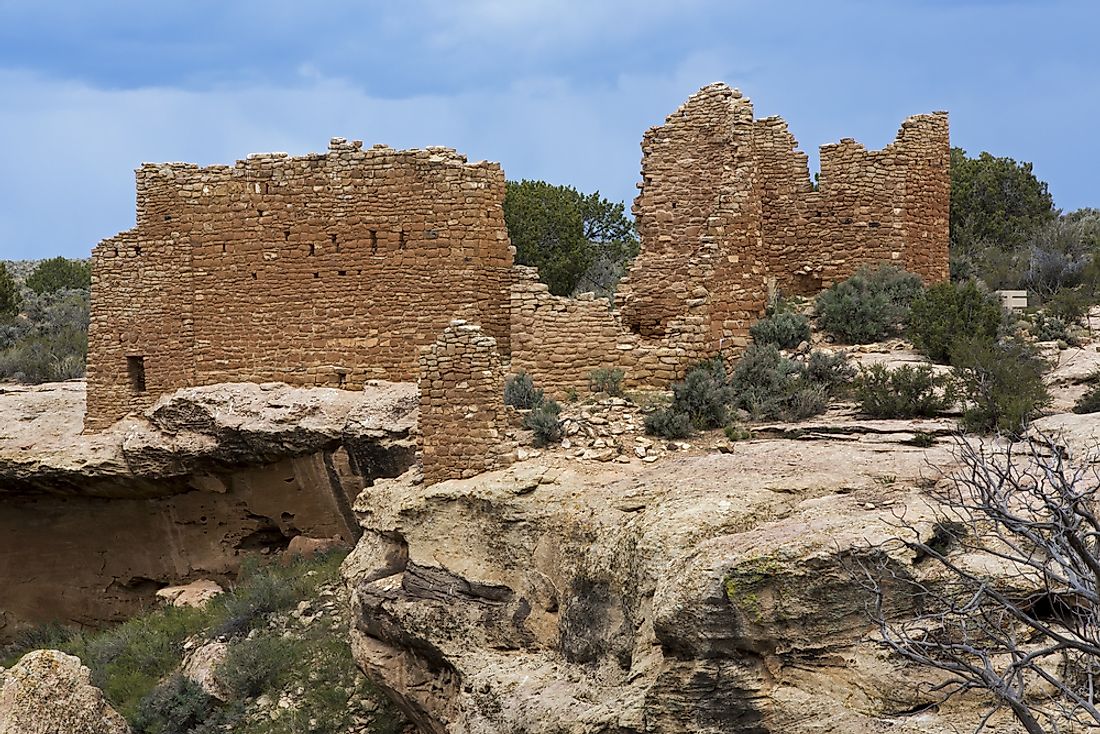What and Where Is Hovenweep National Monument?

The Hovenweep National Monument is situated in Southwestern Colorado and extends to Southeastern Utah. It is between Cortez, Colorado, and Blanding, and measures 3,176 square kilometers. The monument received 39,970 visitors in 2017. It was named Hovenweep in 1878 by William Henry Jackson and William Henry Holmes. The name means “the deserted valley” in the local Ute language.
History of the Monument
The regions have been inhabited since 8,000 BCE. Despite the harsh and difficult terrain, the hunters and gatherers traversed the deep canyons. Maize, basketry, and trading were introduced about 2,000 years ago. Modified Basket making era was between 500 and 750 CE where pottery, bow, and arrows were invented. On Mesa Verde, people began making pit houses. By 900 CE, advancement was made in living style with Pueblo buildings made of stone with U, L or E shaped being constructed near each other.
The first tower was erected close to Kivas and was mainly used as a watchtower for any invader. Water conservation techniques and reservoir started emerging. The Pueblo II Era, that lasted up to 1150, saw the population of Hovenweep residents increase. Dwellings were made at Mesa Verde cliff with a population of approximately 2,500 people. The Hovenweep architectural designs had by now started taking shape. The third Pueblo Era which lasted between 1150 and 1350 experienced construction of three-story towers. Pueblo towers of Hovenweep exhibits expertise and high masonry skills. The 19th-century explorers referred to the stone Pueblos as Castles due to their magnificent look.
Prominent Structures
Some of the prominent buildings are the Hovenweep Castle, Rim Rock Houses, Tower, Square Tower, and the Stronghold house. Ancient murals were extracted and conserved in Anasazi Heritage center. The Kiva mural provides great understanding and an idea on the lifestyle of the native people.
Clusters of Pueblo Structures
Pueblo Structures at the Hovenweep National Monument can be classified into 6 clusters. At Allen Canyon’s head is the Cajon group. The structure made in the horseshoe shape has a tower that can accommodate 80 to 100 people. Cutthroat Castles are the largest remnant of the ancient structures. Located in the northern section of the river, the structure has the bigger part of architecture set beneath the rim. Third, we have the Goodman points which are located in the easternmost section. The underground structure contains both smaller and larger clusters. The Holly group located at the Keeley Canyon is characterized by rock art. Holly has several buildings namely Great House, Isolated Bounder House, Tilted Tower, and the Holly Tower. The Hackberry and Horseshoes are medium sized and are on Bridge Canyon’s east fork. The architectural design suggests ceremonial use. The sixth cluster is the Square Tower group. Located in Little Ruin Canyon, they were built as D- shaped, Oval or circular.
National Monument
In 1854, William D Huntington on his missionary expedition discovered the ruins. In 1903, T Mitchell Pruden surveyed the ruins and reported that they were at the verge of being destroyed by cattlemen and needed to be preserved. In 1917-18, J Walter Fewkes recommended protection of the structures. The Hovenweep National Monument was officially proclaimed by President Warren G Harding on March 2, 1923. In October 1966, the monument was listed as a national historic site. Visitors can also enjoy hiking, picnic, and campsites.











